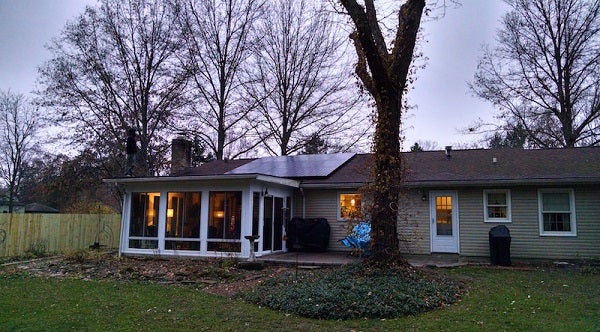Peaker plants, solar, and the changing realities of the electric market

Electrical demands on the grid fluctuate throughout the day, and in different times of year. This presents a challenge for utilities, as generation capacity costs money. Having more generation capacity than is needed is an expensive waste of ratepayer money.
Utilities purchase power from ”peaker” plants to meet times of increased demand. The electricity produced by these power plants is more expensive than non-peak electricity because the plants themselves are not in continual service, so the marginal cost of operating them is higher.
It is also expensive because many peak demand periods are weather related and utilities are bidding against each other for the power at the same time. The need for these plants is based on a centralized model of electricity distribution by which customers receive their electricity from generation stations.
Electricity demand drops with the sun, as peak demand is strongly related to air conditioning. The time of peak demand for utilities is the end of the traditional workday in the heat of the summer.
Distributed solar energy provides a solution to the problem of peak demand. Utilities are already using solar to shave off peak demand and therefore lower the need for “peaker” plants.
The next generation of utility solar plants in Ohio are incorporating trackers which allow the arrays to follow the sun. While, historically the added production value has not justified the additional cost of trackers, that is changing. Utilities are now seeking to broaden the “shoulder” of the production curve. This is all about shaving peak load expenses.
Pairing rooftop solar with battery storage would enable individual customers, and grid operators, to smooth out electricity demand. It allows them dispatch electricity where and when it is needed most. In this way, the move to a more distributed electric system can benefit solar and non-solar owners alike by saving everyone money.
